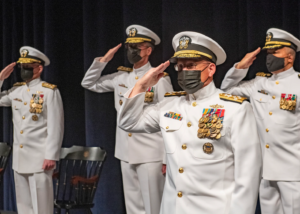
Over the past few years, the US Navy has made it its mission to diversify their ranks. While they have been improving, their high STEM degree requirement poses an obstacle to this goal.
People from different genders, ethnicities, and backgrounds are generally underrepresented in the Navy. For example, in 2016, women only made up 18 percent of the Navy. While these numbers are slowly increasing, without policy changes, it won’t be enough to reach a fair representation.
Diversity is important for all fields. Having people from different backgrounds and walks of life promotes innovation, creativity, collaboration and new ideas. It also gives an opportunity to people from lower socioeconomic backgrounds.
The Navy has addressed the problem of diversity with several solutions. They have some solutions targeting officer recruitment, and others focus on giving and promoting STEM education to minorities. However, one important factor that they are overlooking is the high STEM degree requirement.
This requirement poses obstacles to talented and passionate individuals who want to join the Navy. There could be several outside influences that prevent them from obtaining a high STEM degree, even if they are fully capable. People from low socioeconomic backgrounds are sometimes unable to obtain a high degree of education, and girls and ethnic minorities are often turned away from STEM fields.
STEM degrees are coveted because they show intelligence, problem-solving, and strategic and technical expertise. But these skills can also be demonstrated in a variety of other ways. Instead of focusing on degree requirements, which can be difficult or impossible to obtain, the Navy should also consider other qualities that make for a great officer and leader.
In 2013, Google ran a project called Project Oxygen to find what traits their most successful managers and leaders had. What they found was that these managers:
- Are good coaches
- Empower teams and do not micromanage
- Create an inclusive team environment, showing concern for members’ success and well-being
- Are productive and results-oriented
- Are a good communicators who listen and share information
- Support career development and discuss performance
- Have a clear vision/strategy for their teams
- Have key technical skills to help advise their teams
- Collaborate across Google
- Are a strong decision-makers
These traits are qualities that make a successful worker and leader. Along with intelligence and STEM abilities, it is important for the Navy to search for these qualities as well.
These are important ideas that the Navy is beginning to incorporate. By combining these ideas, hopefully the Navy will be one step closer to achieving its goal of fair representation and inclusion for everybody!
Sources:
McKinney, Dusty, and Patrick Rumsey. “The Navy’s STEM Diversity Problem.” U.S. Naval Institute, 31 May 2022, https://www.usni.org/magazines/proceedings/2022/june/navys-stem-diversity-problem.
Written by: Vivien Chen
June 14, 2022
